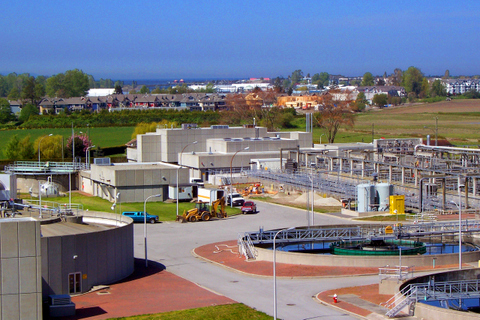Lulu Island Wastewater Treatment Plant. Photo courtesy Metro Vancouver
Most people who walk past a sewage treatment plant can easily recognize the pungent aroma that emanates from behind the fence. Soon the source of that smell could be heating your home.
The Metro Vancouver regional authority has announced it will spend $13 million on a project at the Lulu Island wastewater treatment plant near YVR to capture methane gas normally flared off into the atmosphere and pipe it into the Fortis BC gas distribution system for use in homes and offices.
“The fundamental purpose of sewerage systems and wastewater treatment plants is to protect the environment and human health,” says Metro Vancouver Chair Greg Moore in a news release. “But liquid waste is also a potential source of energy. This green energy can displace the fossil fuels which hasten global warming.”
The Richmond project will begin this spring using a technology that helps to increase gas production from a large ‘sewage digester’. The technology will also purify the gas so it can be used in the natural gas system. Once complete, Metro Van expects to be able to sell enough energy to meet the needs of 400 single-family homes.
“The regional district’s long-term vision is to recover as many resources as possible in liquid waste before it is returned to the environment, as part of the water cycle,” says Metro Van utilities chair Darrell Mussatto, mayor of North Vancouver. “Our experts are evaluating opportunities – and business cases – for recovering energy, nutrients, water and other resources.”
Metro Van has already been capturing methane gas in its five regional wastewater treatment plants and using it to heat the plant or generate electricity. However, this is the first time that gas will be purified and added to the Fortis BC natural gas distribution system for use by the public. Metro Van currently operates a waste-to-energy incinerator in Burnaby that burns garbage to generate electricity. According to Metro Van, this facility produces enough electricity for 16,000 homes.
The Lulu Island project is funded by the province’s Clean Energy Fund and federal gas taxes.


Comments